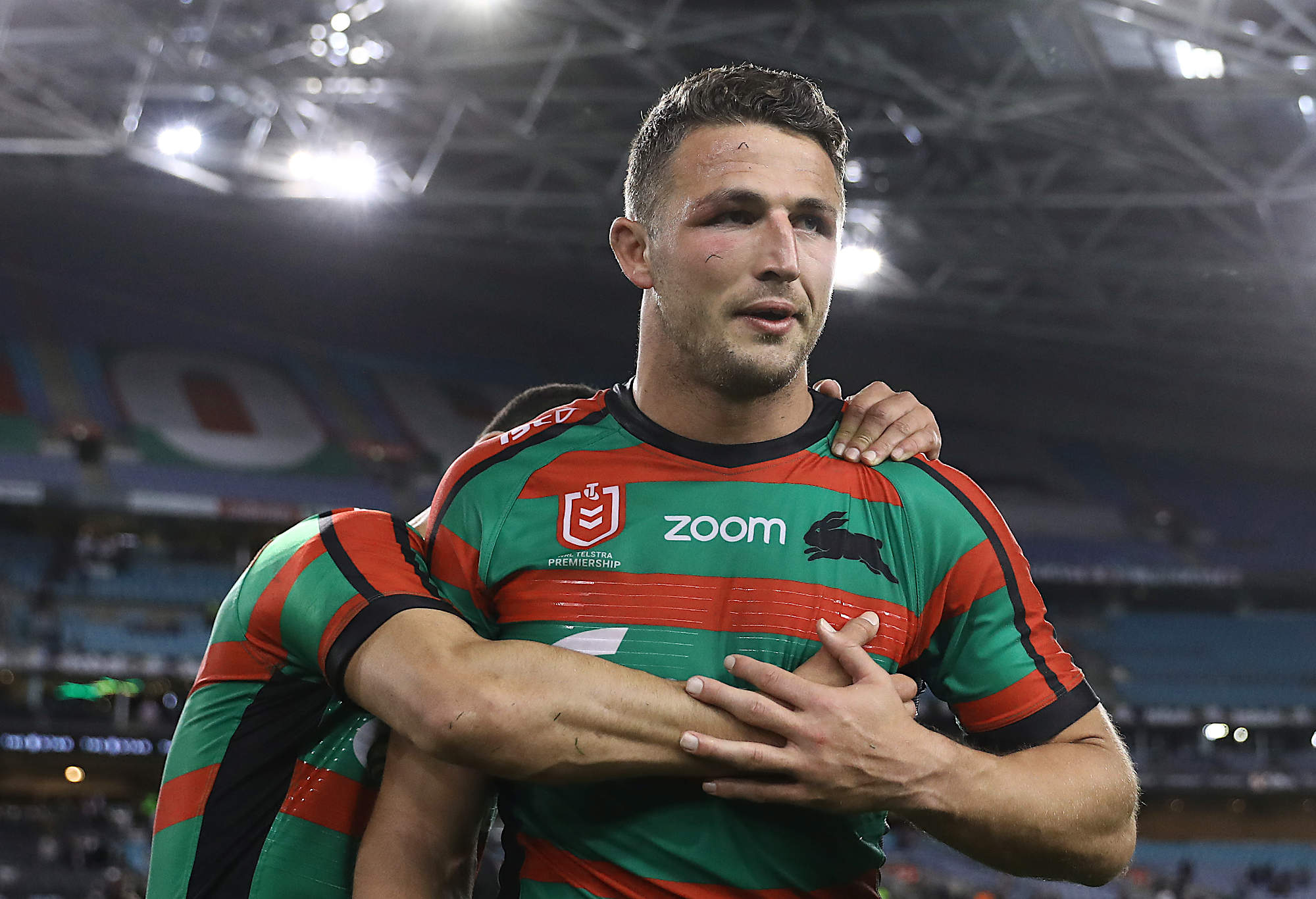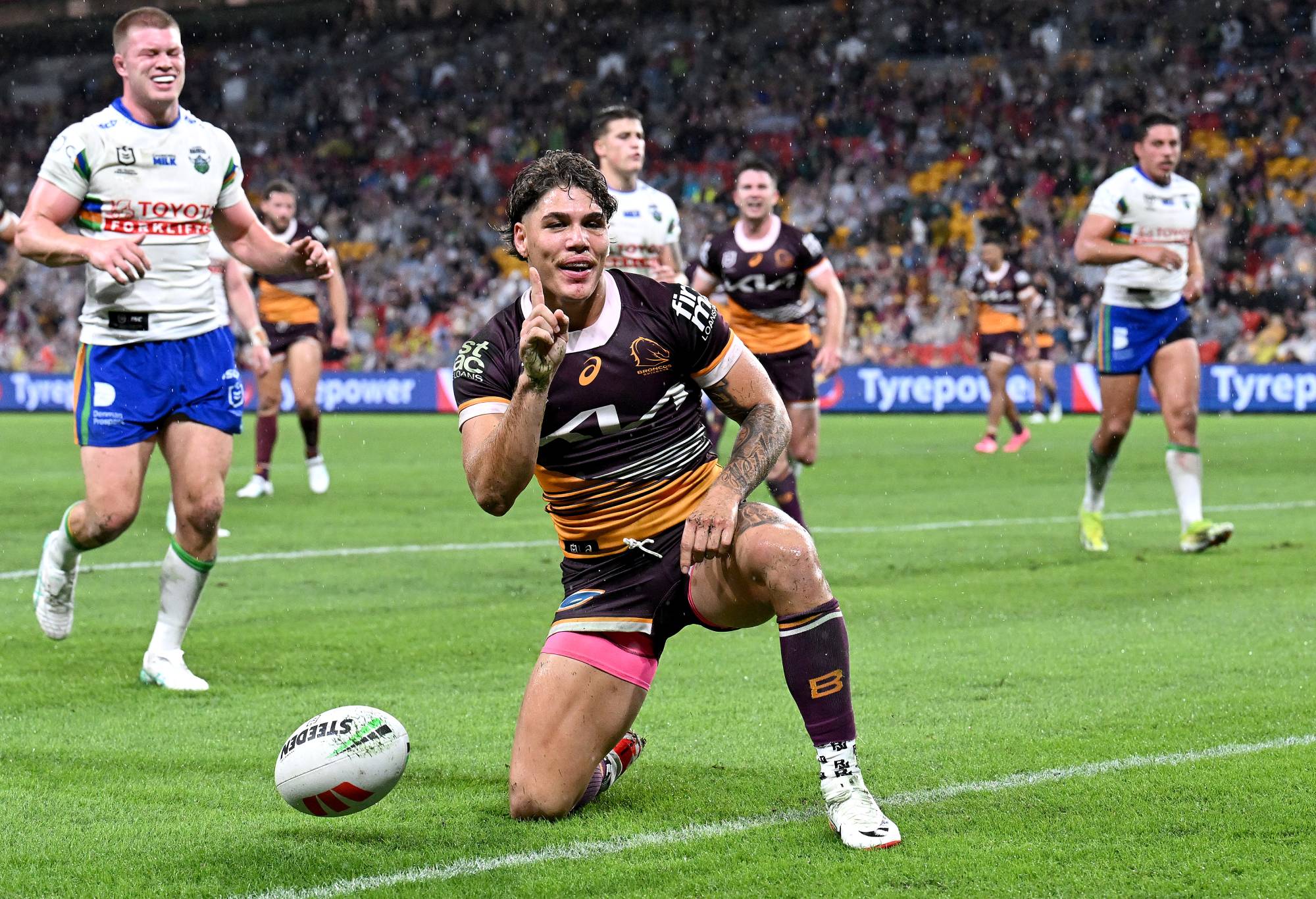Editor
The end of Round 11 might not seem the obvious place to stop and take stock of the rugby league world, but it is as good a time as any.
We’ve now seen each team ten times at least, so we can actually judge what is different about them collectively compared to last year, the year before and so on.
Moreover, this is one of the few weeks in which the Super League and NRL are on roughly the same number of games, with last week taken aside for Challenge Cup semi-finals in the UK, meaning they’re also ten games deep.
If we waited until next week, everything would be subsumed by Origin debate to the point that fans might forget the NRL exists, just like the league itself does when it enters ten weeks of sideshow bagatelle.
Last week, Megan Wellens of Sky Sports published a retrospective of the Super League era that split the history of the competition into five distinct eras, centred around the speed of the ruck, which ended on the contention that a new era might be beginning there with Wigan’s world champions under Matty Peet at the vanguard.
It was a timely piece, especially when viewed with an NRL lens, because we are certainly in the tail end of an era here and we might be seeing the birth of another one in real time.
Wellens’ phases of Super League were roughly analogous to those we saw in Australia, albeit with a push and pull over who did what first.
The first era, in the late 1990s, was dominated by the speed and power of the Bradford Bulls, who had Brian Smith lay the groundwork tactically and Matthew Elliott compound it, allied to the fastest responders to full-time professional fitness levels in St Helens under Shaun McRae. This is an easy analogy to Wayne Bennett’s Broncos on this side of the world.
That was followed by The Entertainers, a peak of maximum point scoring seen most spectacularly with St Helens in the UK but also across plenty of teams here.
Scoring hit 60 points per game in 2001 – when Parramatta under (again) Brian Smith posted the highest total ever in the NRL – and stayed above 55 until as late as 2004.
Then we saw the third era, the wrestle, which definitively took off in Australia before England but came to dominate everywhere, with a slower game, reduced scoring (down to 10 points per game on the early 2000s) and opprobrium from exactly the sort of people who would tell you that rugby league was little more than touch footy a decade later, because nostalgia is never what it used to be.

Cameron Smith (Photo by Ian Hitchcock/Getty Images)
The fourth might be best described as the peak cohesion era, where those best able to manage a slower game was rewarded across both competitions with ultra-integrated teams dominating through defence and kicking.
That was Melbourne in Australia, with essentially the Queensland spine in attack and an exceptional collective effort in defence, and Leeds in the UK, with a similarly consistent rep-level pivot group that could strangle the life out of opponents.
It could be argued that this was a very good era for fans of competition, with highly consistent defensive footy, but also quite a boring time to watch, as attacking took a definitive second place.
It was also the height of the block play, with overly structured offensive schemes, 13s playing as auxiliary props and grind upon grind. We told ourselves we liked the toughness, but it wasn’t always pretty.
Those blokes who told you they hated the wrestle? They really, really hated the block play.

(Photo by Mark Metcalfe/Getty Images)
What we saw in the Six Again rule change was the reaction to this.
It’s taken a few years to settle down, but on both sides of the world, it created teams that could dominate through field position and pressure in Penrith and (again) St Helens.
You let your back five take the bulk of the metres, allowing your middle to rest, which in turn allows them to lead the line speed and gradually move the game to where you want it to be.
The fetishization of run metres and completion rates, allied to rules that overweighted possession dominance, inverted what success looked like in rugby league.
Eras, of course, end – and we might be seeing that now.
Had the Broncos won the NRL last year, which they were 15 minutes away from doing, we might have called it already, but instead, it’s left to Peet’s Wigan to carry the standard.
What both those sides did, and what the best sides are now doing everywhere, is focus on off-the-ball movement.
This is undeniably linked to data – both Wigan and Brisbane were Oval Insights clients in 2023 – and the general ability to track players in real time to measure the previously unmeasurable.
With GPS trackers, clubs get location analysis to go with the previously available event data, which is the nerdy way of saying that we are now able to know what everyone is doing even when they’re not on the ball.
What became abundantly clear was that those who got the most men around the footy created the most attacking opportunities, and those with the best analysts could suddenly measure that a lot more accurately.
It’s certainly filtering through as a major metric to understand the game in 2024, and potentially moving forward.

(Photo by Ian Hitchcock/Getty Images)
Kick Return Metres (KRM) performed this role in the last era, with those that had the best line speed able to attain the most free yards, thus getting the best set starts and renewing the cycle again.
Now, supports can fulfil the same role. The sides that put the most interference on plays, that create the most deception are the ones reaping the benefits.
We’ve written extensively about how Cronulla, top of the NRL, have prioritised this since Craig Fitzgibbon came in.
The Roosters, have scored the most tries in 2024, have made it a hallmark for longer than that, back to when Fitzy was an assistant to Trent Robinson.
And the Broncos, with Lee Briers poached from Wigan to run their attack, are just as focussed on it as ever.
The top five for supports in the NRL at the moment are those two, plus the Panthers, Bulldogs and Manly.
The Sea Eagles might not be the best team in the NRL but they are the most attacking, while the Bulldogs are leaning heavily into the small ball style that has worked so well for the Sharks.
Teams that aren’t that bothered about it – notably South Sydney and Parramatta – have both lost their coaches and sit towards the bottom of the table, still fighting the last war.

(Photo by Bradley Kanaris/Getty Images)
In England, it’s not surprising that Wigan and St Helens lead by a long way with the ever-excellent Catalans under Steve McNamara and last year’s overachievers Leigh also ranked highly.
It’s easy to point at one metric and predict a change of the tactical guard, but just like KRM only gave you a fraction of the story, so focusing on supports does the same.
What can add greater depth is using that metric to talk about the changes in the way that the game is played.
With rule changes foregrounding smaller, fitter players through the six again and devaluing field position through the promotion of short dropouts, we’re seeing more sides opt to out-move their opponents.
As mentioned, the tech has backed this up, as though behind the scenes with the laptops can identify shirkers and actively coach off the ball work in video.
You then hear this in press conferences, as both players and their bosses mention ‘bodies in the frame’ and ‘getting around your mate’ as footyspeak for supports.
(Photo by Jan Kruger/Getty Images)
It mirrors what happened in soccer in previous years, where analytics has made OOP – out of possession – the vanguard of tactical debate.
Teams realised that those who got the ball back through what they did off the ball did best, and that GPS suddenly made who was good at that a lot more quantifiable.
So the ‘luxury player’, who was great on the ball but a passenger without it, died off and the ‘pressing monster’ became prized.
Rugby league has always loved this sort of player, the all-action, all-effort workhorse.
It’s no surprise that some of the favoured sons of ‘underrated NRL player’ lists are ranked highly here, with Jake Trbojevic, Cam McInnes, Reuben Cotter and, inevitably, Dylan Edwards among the very best.
Previous eras had their champions. Edwards is already one, the poster boy for set starts along with Brian To’o at the Panthers.

Paul Gallen takes on the Titans defence for Cronulla in 2008. (Photo by Matt King/Getty Images)
Sam Burgess and Paul Gallen might go down as the archetypes of the pre-set restart grind, tough as teak, and Cameron Smith and Kevin Sinfield as the stars of the cohesion, game management era.
Flamboyant players in the mould of Sean Long and Andrew Johns flourished before them, totems for a style of footy built around attack, and prior to that, the likes of James Lowes, Man of Steel in 1997 behind that Bulls pack, or Wendell Sailor, the first yardage winger enabled by the full-time game, might be representative.
If the Off-The-Ball Era does begin in 2024, we’ll have new stars to match the new game.
Reece Walsh, put into space by the movement of others, might be one, or Jai Field, for whom the moves the Broncos now run were designed.
Sam Walker, the sort of off-the-cuff little man we were promised would come back, might be another, or Mikey Lewis, doing something similar in the UK.
It’s yet to be written of course. It might be that the Panthers are still champions down here or that St Helens are up there, too, because they are adapting to the game as it changes around them.
More of all, it might be that the shift has already happened: just watch enough footy and you can see it.